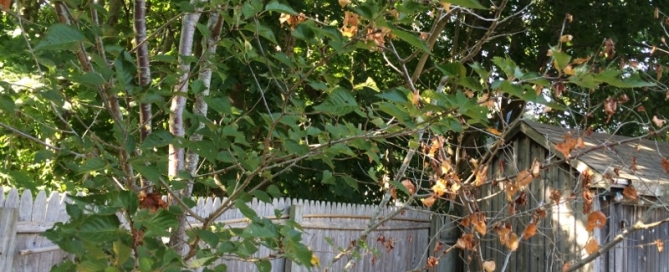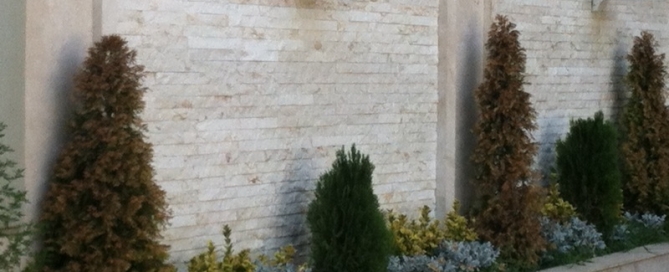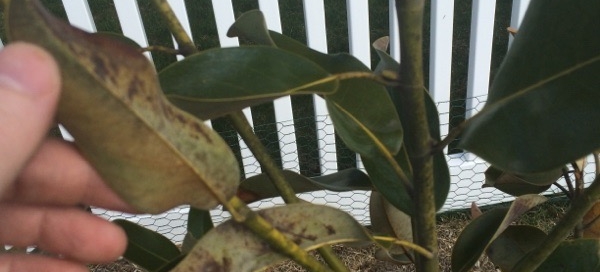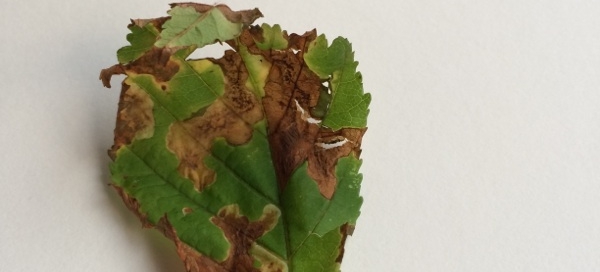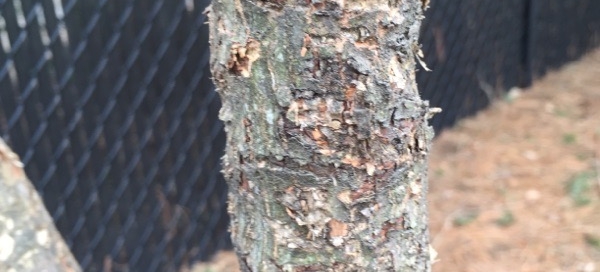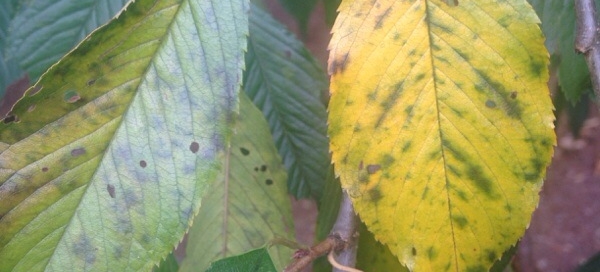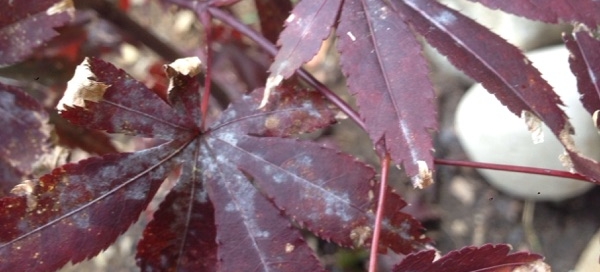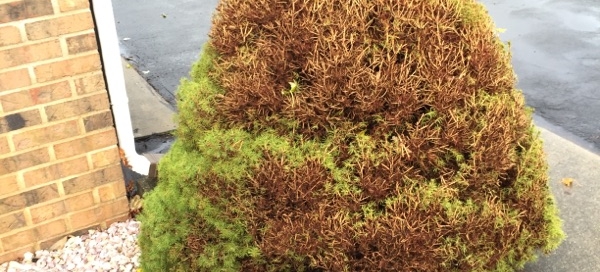Die Back On Cherry Tree
Without seeing your tree in person it's impossible to say what is causing the die back pictured. But listed here are some possible of the causes of such damage. Keep in mind that sometimes what we see on plants isn't caused just by one thing, but a combination of two or more situations, so what you are seeing might be caused by one or more of the following:
1. Physical damage: If a branch is broken, bent, or otherwise damaged it can brown and die.
2. Borers or bark eaters: physical damage can also be caused by insects that bore into a stem, or by critters that eat the bark around a stem.
3. Drought: when a plant is growing in dry soil it may have die back on top since the roots dry up and there aren't enough roots to sustain all the stems and leaves up top.
4. Vascular diseases: there are some diseases that cause the vascular system in a tree to shrink so that the water can't flow from the roots up to the stems and leaves.
5. Bacterial Canker: One of the most destructive diseases in cherry trees - there is no cure.
Without culturing in a lab, and seeing the plant and the soil surrounding etc, it's impossible to know which one or more causes are the problem with your plant. But you, of course, want to know what you can do to help this tree in all ways possible. So here is what you can do:
1. If the stems that have brown leaves are dead, prune them off. If you don't know yet if they are dead, wait until next spring and once the plant starts to break dormancy, prune off any branches that don't have new life on them.
2. Look at the trunk of the tree carefully - if there are sunken areas, especially if there is sap dripping from those sunken areas, it's probably canker and there is nothing to be done.
3. Look at the stems that have wilted carefully: are there any holes or scrapped bark where the die back starts? If so, prune off these branches and throw away.
4. Next year after the plant starts to leaf out, watch for new signs of wilting. At the first sign, take a branch into your local cooperative extension or garden center to see if they can identify the problem. Don't take in branches that are already dead as it's difficult without lab culture to see what the problem is once the area has died. Try to take in samples of the problem just starting.
Cherry trees are prone to numerous problems in this area, both diseases and insects. If your tree dies, pick some other variety of tree to replace it.
